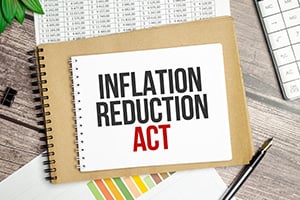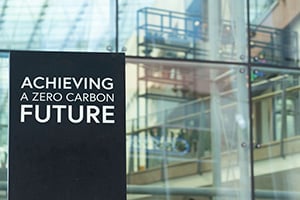
Energy efficiency momentum continues to accelerate as property owners consider current and future legislation. Many industry experts believe these initiatives are just getting started. Existing laws, such as San Francisco’s Benchmarking law, show significant Building Energy reduction results. Energy reporting programs are driving more residential, commercial, municipal, and industrial property owners to protect the earth.
Reducing industrial and commercial energy consumption by just 20% would also save businesses approximately $80 billion USD per year. To that end:
- More than 250 businesses and organizations are partnering (and getting) involved in the Department of Energy’s (DOE) Better Buildings Challenge, representing more than 3 billion SF of building space.
- Approximately 15% of U.S. commercial space is associated with the Better Buildings Alliance.
- Fifty states and 25 financial allies have committed more than $5 billion USD in energy-efficient investments.
Partners in the Better Buildings Program are setting higher energy reduction standards for all. ENERGY STAR Benchmarking Ordinance and the ENERGY STAR Portfolio Manager Tool® reflect the importance of gathering and tracking energy usage data.
ENERGY STAR Benchmarking Ordinance
The ENERGY STAR Benchmarking Ordinance is a multiple-step process that many clients ask about. Benchmarking takes some time to get used to: Sustainable Investment Group (SIG) recommends getting started now.
The largest buildings represent about one percent of the nation’s buildings but consume more than 20% of total building energy. The ENERGY STAR Benchmarking Ordinance was implemented with the goal of reducing energy consumption in the U.S.
Benchmarking serves to: 1) encourage transparency concerning energy information, 2) influence building and construction decisions, and 3) raise awareness about building energy use. The Benchmarking Ordinance’s primary goal is to capture savings for owners and tenants while supporting property owners’ ability to achieve relevant state and local goals, such as Atlanta Commercial Buildings Energy Efficiency Ordinance.
In 2015, municipal and commercial buildings 50,000 square feet or larger will be required to submit energy use data. From 2016 forward, municipal and commercial buildings 25,000 square feet or larger will be required to submit energy use data.
Submission of annual benchmarking data occurs in three parts: 1) benchmarking, 2) energy data verification, and 3) reporting to local and state agencies:
- Collecting energy information is the first step towards improving efficiencies and cutting energy costs. Data is used to measure and track progress needed to achieve energy goals.
- Benchmarking facilities against the EPA criteria helps clients gain recognition as federally recognized ENERGY STAR buildings.
- Earning ENERGY STAR certification demonstrates commitment to energy efficiency.
Benchmarking works, as reflected by San Francisco’s 2010 Energy Benchmarking Law. Commercial and industrial energy use has already declined by 8%. Current or pending legislation around the country places renewed focus on ENERGY STAR benchmarking. Data submitted to the program is one of the required elements of legislation.
Many cities are following San Francisco’s benchmarking lead, including Midwestern cities Chicago, Minneapolis, and Kansas City.
ENERGY STAR Portfolio Manager® Tool
The ENERGY STAR Portfolio Manager® tool is required for benchmarking. Building and energy data must be submitted to local and state regulatory agencies via the free online ENERGY STAR Portfolio Manager® tool.
Owners input building characteristics and utility use data to evaluate energy efficiency and ENERGY STAR® scores. SIG helps clients submit reports and update the Portfolio Manager to keep the process moving forward.
Benchmarking provides actionable information about clients’ portfolios. Clients learn how their properties compare to other buildings of similar size and use. This awareness leads to motivation for operational improvements that will realize greater energy efficiency.
Outsourcing essential compliance reporting to a third-party consultant can save time and resources. SIG’s experienced, trained, and licensed professional team is one to whom clients entrust energy efficiency matters.
Better Buildings Challenge
DOE’s Better Buildings Challenge (BBC) looks quite modest on paper but the goal of reducing building energy consumption 20% by 2020 is a significant initiative.
Residential, educational, commercial, and industrial facilities consume about one-third of the world’s energy. These buildings account for more than USD 400 bn in energy consumption. Energy reduction, along with capital savings, is a key element in successful climate mitigation strategy.
Many property owners have approached decarbonization in a conservative way. For instance, switching out LEDs for traditional light bulbs is an inexpensive first step to addressing carbon reduction.
Naturally, owners must dig deeper and go bigger to address energy use. BBC’s premise is simple. Broad building efficiency goals and stakeholder buy-in are keys to success. Some of the country’s largest organizations are already involved. Sharing best practices and results stimulates competition that ultimately benefits everyone.
 ENERGY STAR Partner of the Year
ENERGY STAR Partner of the Year
EPA ENERGY STAR Partner of the Year is awarded to organizations committed to the realization of long-term energy efficiency in the United States. SIG has earned EPA’s ENERGY STAR for Buildings Elite Member title. We certified more than 150 buildings for clients across the country last year.
Sustainable Investment Group’s hands-on experience helps clients target and implement effective, efficient energy solutions. To learn more about how you can achieve an ENERGY STAR building certification, contact Michael Cichetti at 404.343.3835.
© 2015 Sustainable Investment Group (SIG). All Rights Reserved.



